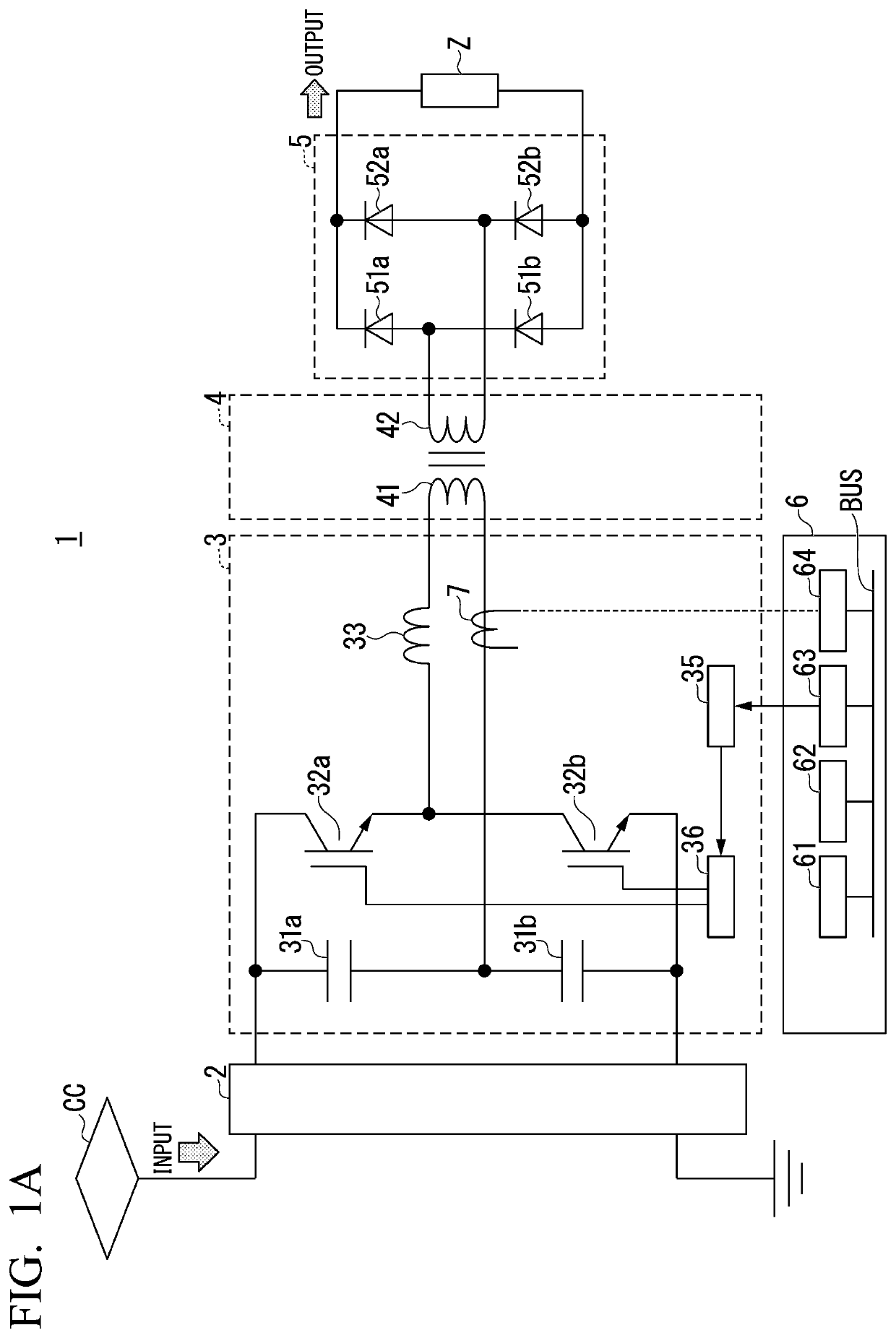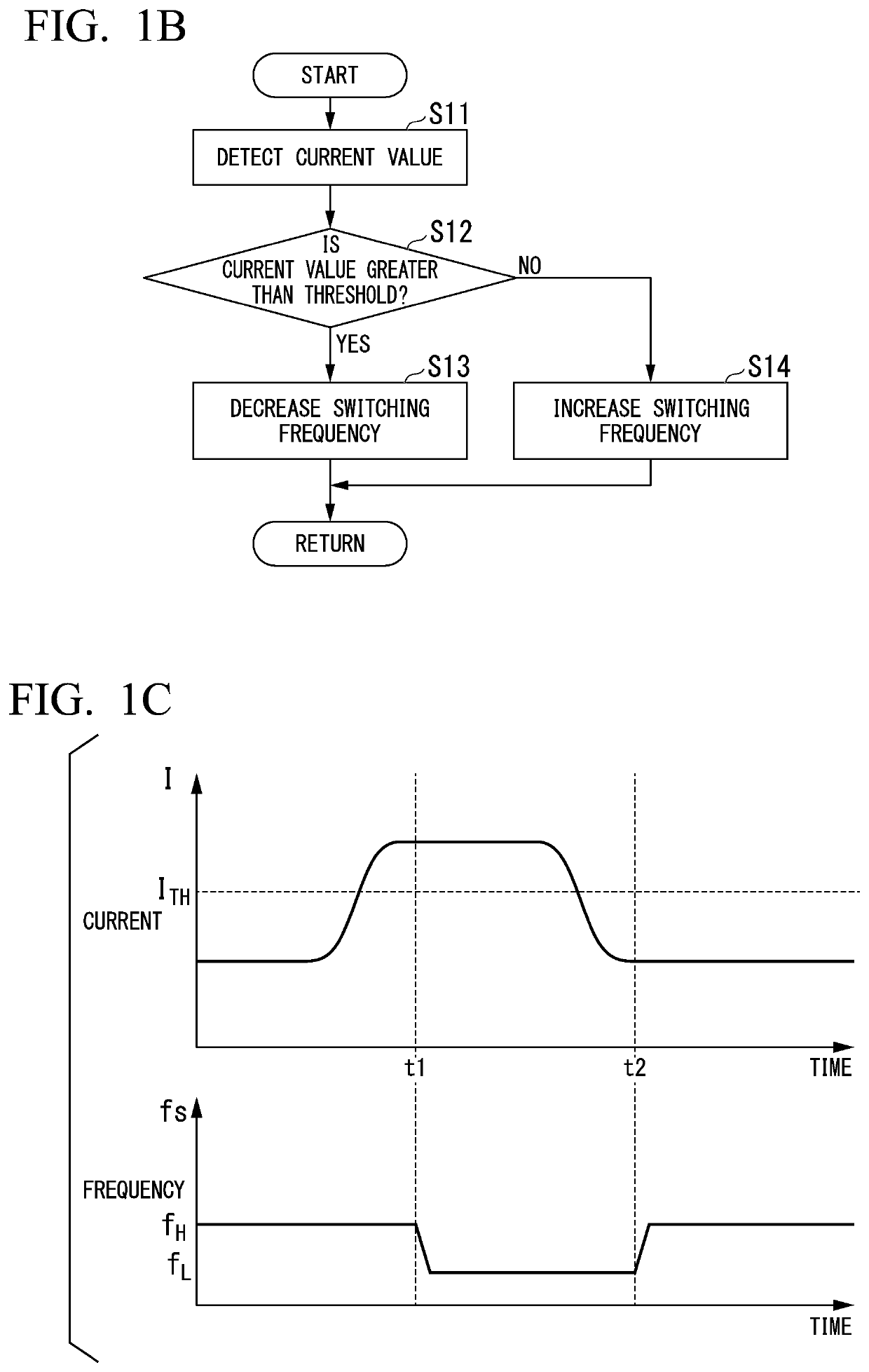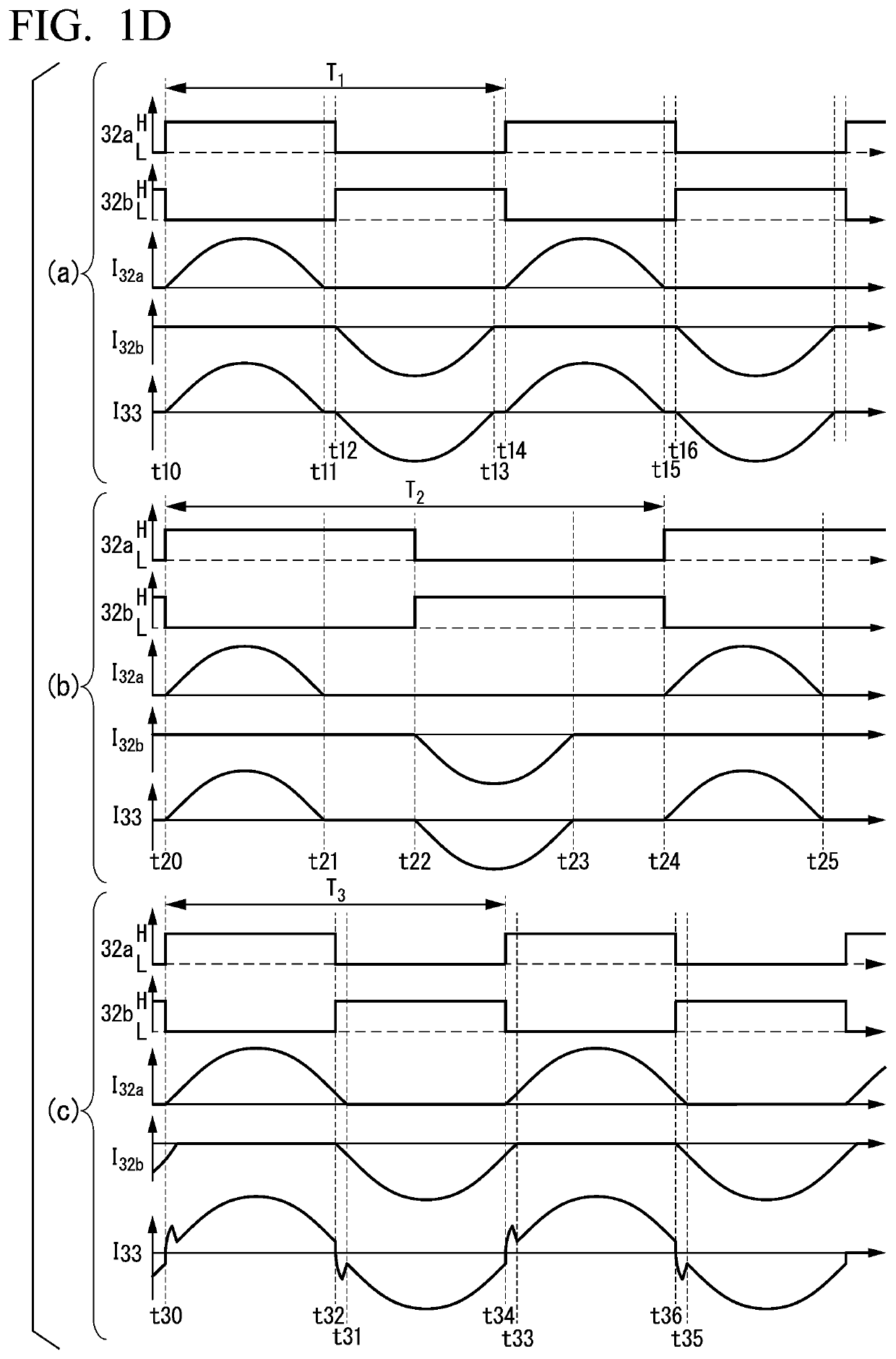Power supply device for electric vehicle
a technology for power supply devices and electric vehicles, applied in the direction of electric variable regulation, process and machine control, instruments, etc., can solve problems such as unintended increase in power loss in the power supply of electric vehicles, and achieve the effect of inhibiting an increase in power loss
- Summary
- Abstract
- Description
- Claims
- Application Information
AI Technical Summary
Benefits of technology
Problems solved by technology
Method used
Image
Examples
first embodiment
[0024]FIG. 1A is a diagram illustrating an overall configuration of a power supply for electric vehicle according to a first embodiment. The power supply 1 for electric vehicle is connected in series to a current path between a current collector CC supplied with power from an overhead wire (feeder) F (not illustrated) and a wheel W (not illustrated) grounded via a line R (not illustrated). A pole that has substantially the same potential as a pole on the side of the line R and the wheel W in FIG. 1A is indicated as a ground pole.
[0025]The power supply 1 for electric vehicle includes, for example, a power conversion circuit 2, a resonant inverter 3, a transformer 4, a rectifier 5 (rectifier circuit), a control unit 6, and a current detector 7 (a first current detector). Reference sign Z denotes a load.
[0026]The power conversion circuit 2 is connected to the rear stage of the current collector CC and converts power collected by the current collector CC into direct-current power with a...
first modified example
(First Modified Example of First Embodiment)
[0065]The resonant inverter 3 according to the first embodiment adjusts the switching frequency of the resonant inverter to a pre-decided switching frequency in a fixed or semi-fixed manner. Instead of this, in a first modified example, an instance in which a switching frequency of a resonant inverter is adjusted to an optimized frequency will be described.
[0066]In the case of the resonant inverter, by forming a current waveform as a waveform closer to a sinusoidal wave, it is possible to further improve efficiency. Accordingly, the control unit 6 finds an upper limit of the resonant frequency at which the switching of the switching elements 32a and 32b is the soft switching, forms a waveform of a current flowing to the primary side of the transformer 4 as a waveform closer to a sinusoidal wave, and outputs the waveform.
[0067]For example, the power supply 1 for electric vehicle includes the current detector 7 that detects a current flowing...
second modified example
(Second Modified Example of First Embodiment)
[0069]The resonant inverter 3 according to an embodiment is an example of a half bridge type voltage inverter. The resonant inverter 3 is not limited to the resonant inverter illustrated in FIG. 1A. Instead of this, for example, a full bridge type voltage inverter or current inverter may be used. In the case of the current inverter, the control unit 6 can measure a voltage instead of measuring a current, as described above, and can perform the control similarly based on the voltage.
PUM
 Login to View More
Login to View More Abstract
Description
Claims
Application Information
 Login to View More
Login to View More - R&D
- Intellectual Property
- Life Sciences
- Materials
- Tech Scout
- Unparalleled Data Quality
- Higher Quality Content
- 60% Fewer Hallucinations
Browse by: Latest US Patents, China's latest patents, Technical Efficacy Thesaurus, Application Domain, Technology Topic, Popular Technical Reports.
© 2025 PatSnap. All rights reserved.Legal|Privacy policy|Modern Slavery Act Transparency Statement|Sitemap|About US| Contact US: help@patsnap.com



